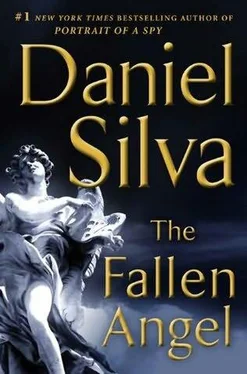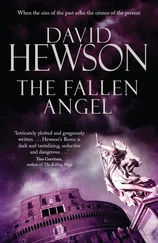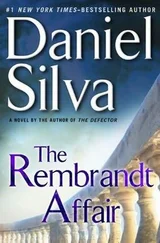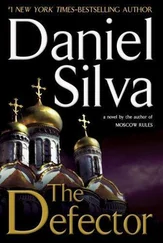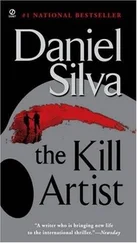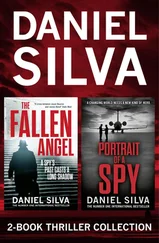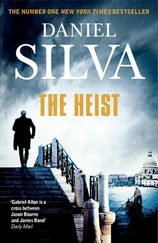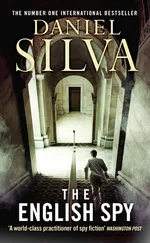Just a pair of fallen angels rushing forward with their arms extended.
Two seconds, maybe less.
Alef, Bet, Gimel, Dalet . . .
Then it was done.
Chiara never heard the gunshots, only the sirens. Alone in her room, she thought it was the most beautiful sound she had ever heard. She listened for several minutes, then snatched up her mobile phone and dialed Uzi Navot at the Interior Ministry. She could barely hear his voice over the background noise.
“What’s going on?”
“It’s over,” he said.
“Was anyone else hurt?”
“Only the bad guys.”
“Where is he?”
“The Austrians have him.”
“I want him back.”
“Don’t worry,” Navot said. “He’s all yours now.”
36
VIENNA–TEL AVIV–VATICAN CITY
LIKE MOST LIES, IT WAS not altogether convincing. Shamron found no fault in this; in fact, he wholeheartedly approved. Lying, he said, was a distinctly human endeavor, even when it was being done by professionals. And a lie that was too well told was one not easily believed.
Initially, there was confusion over precisely what had occurred at sunset in the narrow street outside the Stadttempel. The first bulletins on Austrian radio reported that a pair of gunmen had killed four Jewish men outside the synagogue in what appeared to be an act of right-wing extremist violence. The situation was muddied further when an obscure neo-Nazi group proudly claimed responsibility for the deed. Jonas Kessler’s first instinct was to quickly correct the story. But Shamron and Uzi Navot prevailed upon him to let it linger until nine that evening, when he finally appeared in the Interior Ministry’s press briefing room to reveal the truth—or at least the truth as he saw it. Yes, Kessler began, there had indeed been a shooting at the synagogue, but the four dead were suicide bombers from Hezbollah who had come to Vienna to carry out a murderous terrorist attack. The Austrian authorities, he said, had been alerted to the presence of the cell in Vienna by a foreign intelligence service that Kessler, for understandable reasons, could not identify. As for the successful operation outside the synagogue, it was a strictly Austrian affair carried out by the EKO Cobra division of the Federal Police. It was, Kessler concluded with admirable sincerity, “EKO Cobra’s finest hour.”
Naturally, the press was drawn to the one aspect of the story where Kessler had been most evasive—the source of the intelligence that had led to the successful operation. Kessler and the rest of the Austrian security establishment held fast to their refusal to comment, but within forty-eight hours, numerous unnamed “intelligence sources” were quietly giving credit to the CIA. Once again, the television terrorism analysts questioned the accuracy of the reports, saying it was far more likely that the information had come from Israel. On the record, the Israelis refused to comment. Privately, however, they swore it wasn’t true.
The matter did not die there. In fact, it took on new life the very next morning when Die Presse , one of Austria’s most respected papers, published a detailed account of the operation, based in large part on eyewitness testimony. The most intriguing aspect of the story was the description of the smaller of the two gunmen. And then there was the unkempt figure who had overseen the evacuation of the interior of the synagogue in the minutes preceding the attack. There were some who thought he bore an uncanny resemblance to a man who used to run a small Holocaust restitution agency in Vienna called Wartime Claims and Inquiries. An Israeli newspaper immediately reported that the man in question—Professor Eli Lavon of Hebrew University—was working on a dig near the Western Wall Tunnel at the time and that he had no known links to Israeli intelligence, neither of which was true.
Needless to say, much of the Islamic world was soon boiling over with a sacred rage directed at Israel, its intelligence service, and, by extension, their new friends the Austrians. Newspapers across the Middle East declared the killings a wanton act of murder and challenged the Austrians to produce the bomb vests allegedly worn by the four “martyrs.” When Kessler did just that, the Arab press declared the vests fraudulent. And when Kessler released carefully edited photographs of the bodies that clearly showed the four men laden with bombs, the Arab world declared those fraudulent, too. It saw the hidden hand of Israel in the killings, and for once it was absolutely and entirely correct.
It was against this unsettled backdrop that Massoud Rahimi, Iran’s kidnapped diplomat, was found wandering handcuffed and blindfolded in a pasture in the far north of Germany. He told the German police that he had escaped from his captors, but in a statement, the Iranian Liberation Army said they had released Massoud for “humanitarian reasons.” The next morning, looking a few pounds thinner but otherwise in good health, Massoud appeared before the cameras in Tehran, flanked by the Iranian president and the chief of his service. Massoud offered few details about his time in captivity, except to say that, in general terms, he was well treated. His chief appeared somewhat skeptical, as did the Iranian president, who vowed that those behind the kidnapping would be severely punished.
The threat of Iranian retaliation was not taken lightly, especially within the corridors of King Saul Boulevard. For the most part, though, the Office celebrated the success of the operation. Lives had been saved, an old adversary had been severely compromised, and a lucrative fund-raising network for Hezbollah lay in ruins. If there was one factor that diminished their mood, however, it was the fact that His Holiness Pope Paul VII was scheduled to land at Ben Gurion Airport in less than a week. Given the overall turbulence in the region, Uzi Navot thought it might be wise for the Vatican to consider postponing the trip, a sentiment shared by the prime minister and the rest of his fractious cabinet. But who was going to tell the pope not to come to the Holy Land? They had but one candidate. A fallen angel in black. A sinner in the city of saints.
Father Mark was waiting for Gabriel just inside the Bronze Doors. He escorted him up the steps of the Scala Regia, across the cobblestones of the Cortile di San Damaso, and, eventually, upstairs to the private apartments of the pope. Donati was seated behind the desk in his office. It was a simple, high-ceilinged room with whitewashed walls and shelves lined with books on canon law. Framed photographs stood in neat rows atop the credenza. Most showed Donati standing discreetly at the side of his master at historic moments of the papacy. One photo, however, seemed curiously out of place—a younger version of Donati, soiled and smiling without reservation, his arm flung across the shoulder of a bookish young priest.
“That’s Father José Martinez,” Donati explained. “We’d just finished building a schoolhouse in our village in El Salvador. It was taken a week before his murder.” He studied Gabriel’s face for a moment and then frowned. “You look the way I did when I came out of El Salvador one step ahead of the death squads.”
“It’s been a busy few weeks since I left Rome.”
“So I’ve been reading,” Donati said. “An art theft in France, an explosion at a gallery in St. Moritz, a kidnapped Iranian diplomat, and a dramatic counterterrorism operation in the heart of Vienna. To the uninitiated, these events might appear unrelated. But to someone like me, they appear to have one thing in common.”
“Two things, actually,” said Gabriel. “One is the Office. And the other is Carlo Marchese.”
It was approaching six o’clock, and the sun was dipping below the rooftops and domes of Rome’s historic center. As Gabriel spoke, the soft sienna light drained slowly from the office until it was cloaked in a confessional gloom. Dressed in his black cassock, Donati might have been invisible were it not for the ember of his cigarette. At the conclusion of Gabriel’s account, he sat for several minutes in a penitential silence before walking over to the window. Directly below was the Bastion of Nicholas V, the medieval tower that now served as headquarters of the Vatican Bank.
Читать дальше
Конец ознакомительного отрывка
Купить книгу
